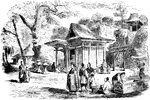Clipart tagged: ‘Shrine’
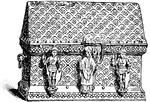
Feretory
"Feretory. English medieval silverwork. A shrine or bier containing the relics of saints, adapted to…
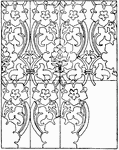
Gold Pattern
This gold pattern is a 15th century design found on the floor of the altar shrine in the monastery of…
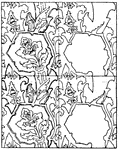
Gold Pattern
This gold pattern is a design found on the floor of the altar shrine in the church of St. Egidius, Barthfeld,…

Sekos
"Sekos- Plan of the Great Hall of the Mysteries, Eleusis, as excavated in 1888." -Whitney, 1911
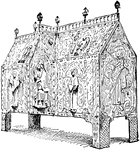
Shrine
"Shrine of St. Calmine, Duke of Aquitaine, in enameled and gilded copper; early 13th century." -Whitney,…

Temple of Venus and Roma, Plan
The Temple of Venus and Roma (Latin: Templum Veneris et Romae) was the largest known temple in Ancient…
